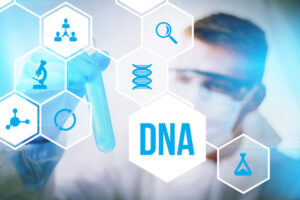In a world where accurate identification and confirmation of biological relationships are crucial, paternity tests have become an invaluable tool. Paternity tests serve as a scientific method to determine the biological father of a child, providing clarity and resolving doubts or disputes surrounding paternity.

This article aims to provide a comprehensive guide on paternity tests, their types, procedures, reliability, legal implications, and emotional considerations.
What is a Paternity Test?
A paternity test is a DNA-based test conducted to determine the biological relationship between a child and an alleged father. The test compares the child’s DNA profile with that of the alleged father to assess the likelihood of paternity. By examining specific genetic markers, paternity tests can accurately establish whether an individual is the biological father of a child with a high degree of certainty.
Types of Paternity Tests
- Non-Invasive Prenatal Paternity Tests: These tests involve analyzing the fetal DNA present in the mother’s blood during pregnancy. They offer a safe and accurate way to determine paternity before the child’s birth, without any risk to the fetus.
- Postnatal Paternity Tests: These tests are conducted after the child is born and involve collecting DNA samples from the child, the alleged father, and, if available, the mother. The most common method is a simple cheek swab to collect saliva samples.
- Home Paternity Tests: These tests can be performed at home, utilizing kits available over the counter or online. They typically involve collecting DNA samples using cheek swabs and sending them to a certified laboratory for analysis.
Paternity Test Procedure
- Sample Collection: The DNA samples are collected from the child, the alleged father, and, if possible, the mother. Cheek swabs are the most commonly used method for collecting samples. The swabs are rubbed inside the cheek to collect buccal cells, which contain DNA. Blood samples may also be used in certain cases.
- Laboratory Analysis: The collected DNA samples are sent to a certified laboratory, where they undergo detailed analysis. The laboratory compares the genetic markers in the samples to assess the probability of paternity. Advanced DNA analysis techniques, such as Polymerase Chain Reaction (PCR), are employed to ensure accuracy.
- Result Interpretation: The laboratory generates a comprehensive report detailing the genetic analysis and probability of paternity. The report typically includes a paternity index or probability of paternity, expressing the likelihood of the alleged father being the biological father. A probability of 99% or higher is generally considered conclusive evidence of paternity.

Reliability of Paternity Tests
Modern paternity tests have an accuracy rate of over 99%. The accuracy primarily depends on the quality of the DNA samples collected and the laboratory’s expertise in conducting the analysis. Samples collected and analyzed according to established protocols provide highly reliable results. It is essential to ensure the laboratory performing the test is accredited and follows strict quality control procedures to maintain accuracy.
Legal Implications of Paternity Tests
Paternity tests have significant legal implications, especially when used in court or for legal purposes. A court-admissible paternity test requires strict chain-of-custody protocols to ensure sample integrity and prevent tampering. The results of legally admissible tests can be used to establish legal rights and obligations, including child support, custody, visitation rights, and inheritance matters.
Emotional Considerations
The decision to pursue a paternity test is a deeply personal one and can have emotional consequences for all parties involved. Before opting for a test, it is essential to consider the potential impact on relationships, especially if the test results reveal unexpected or challenging information. It is advisable to seek counseling or support to navigate the emotional complexities that may arise from the test results.
Learn more at Wiki as well.